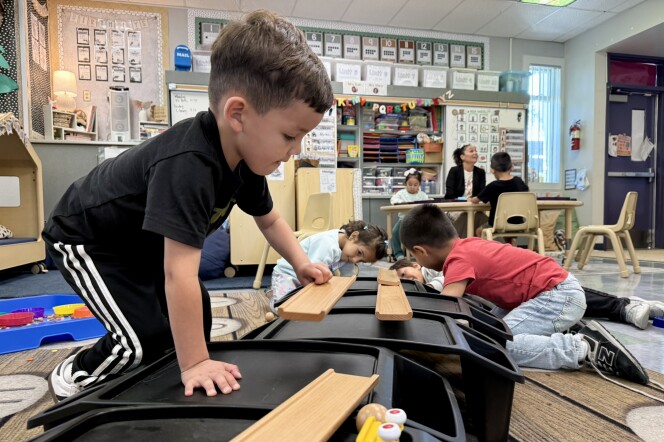With our free press under threat and federal funding for public media gone, your support matters more than ever. Help keep the LAist newsroom strong, become a monthly member or increase your support today.
Human Cloning May Be Just Around the Corner

Ten years ago Thursday, the public learned that Scottish scientists had cloned a sheep.
Dolly was the world's first cloned mammal. The news brought often hysterical speculation that human cloning was just around the corner. Today, human cloning may indeed be just around the corner, but not in the way people feared a decade ago.
Each one of a person's skin cells contains all the DNA necessary to make that person. But because it's a skin cell, the DNA has undergone some physical changes. These changes have the effect of turning off lots of genes that aren't needed for making a person's skin. The same is true for virtually all the cells in a human body.
The Roslin Institute scientists showed that it was possible to undo those changes by putting a cell into an egg. Somehow, the egg is able to rejuvenate the DNA. It restores the potential of any adult cell's DNA to make an entire animal.
That's how Dolly was made, and the technique took off.
Despite all the success with four-legged animals, there were no credible reports suggesting human cloning was possible — until 2004, when South Koreans claimed they had successfully cloned a human embryo.
The claim appeared in the prestigious journal Science, but the report turned out to be fraudulent.
The Korean scientists weren't trying to make a cloned baby. They were trying to make a cloned embryo in order make embryonic stem cells.
Here's why: If a skin cell is used to make a cloned embryo, any stem cells from that embryo would be genetically identical to the person who provided the skin cell. And thus, that person's immune system wouldn't reject tissue grown from those stem cells.
This promise of tailor-made stem-cell therapies has prompted several teams of scientists around the world to try to make embryonic stem cells from cloned embryos. But Robert Lanza of the biotech firm ACT says no one's managed it — yet.
"There have now been at least a dozen ... species cloned, but for each species there's been a unique set of problems, and the human is no different," Lanza says.
One reason the roadblocks to human cloning are hard to overcome is the shortage of human eggs for research.
Robert Blelloch of the University of California San Francisco says that made him decide to begin his work on human cloning by studying monkeys first.
"If we can figure out these big roadblocks in a system where we have better access to healthy eggs, then I think we'll be in a much better position," Blelloch says. "Once we figure those roadblocks out, we can move on to humans."
Another hurdle is ignorance about precisely how a fertilized egg begins to divide and grow.
"Because the federal government has prohibited academic institutions from working on embryos, we really know almost nothing about human embryos in the beginning stages," says Susan Fisher, a stem-cell scientist at UC San Francisco.
The opportunities for gaining that knowledge are probably greatest in California, where Fisher and Blelloch work, because California has committed to spending $3 billion on cloning and stem-cell research over the next decade.
"So for us to get somewhere, I really think that we need to understand the basic biology. Otherwise, we are just technicians who are trying a whole bunch of things, and there's so much to try," Fisher says.
Despite the hurdles, Fisher, Blelloch and Lanza don't hesitate when asked whether someone will succeed in cloning a human embryo.
"Oh, I absolutely do think it's going to happen," Fisher says. "I don't think there's any biological reason why the human is any different than other mammalian species."
Of course, while it may be technically possible to make a cloned human embryo, President Bush and others have argued it's morally wrong — and not something scientists should do.
Copyright 2023 NPR. To see more, visit https://www.npr.org. 9(MDA1OTI3MjQ5MDEyODUwMTE2MzM1YzNmZA004))








